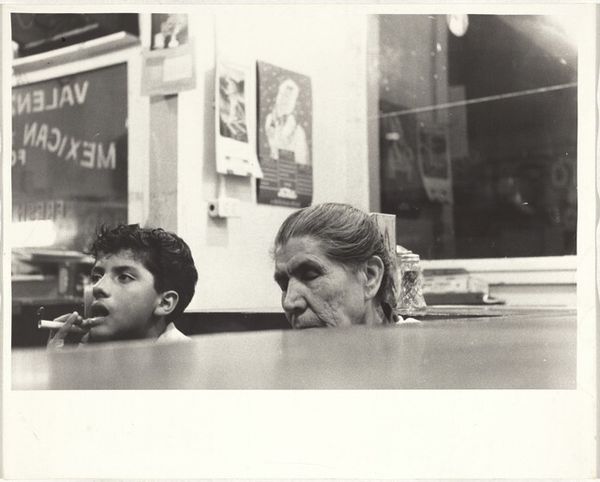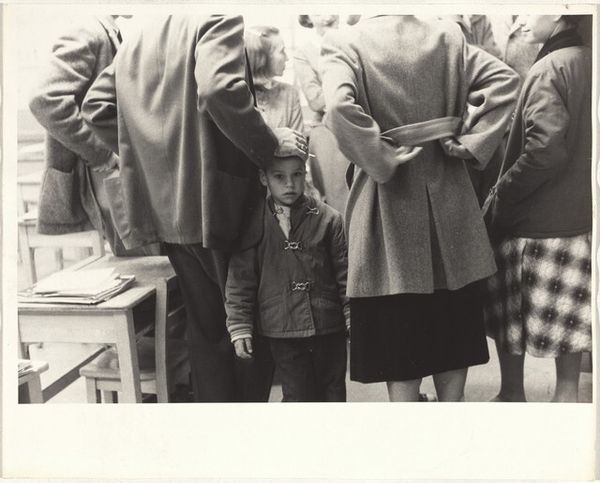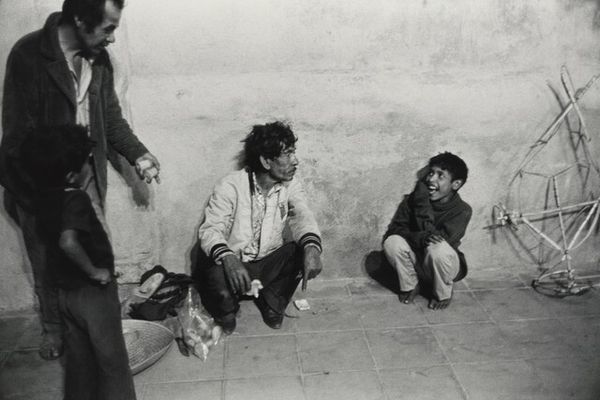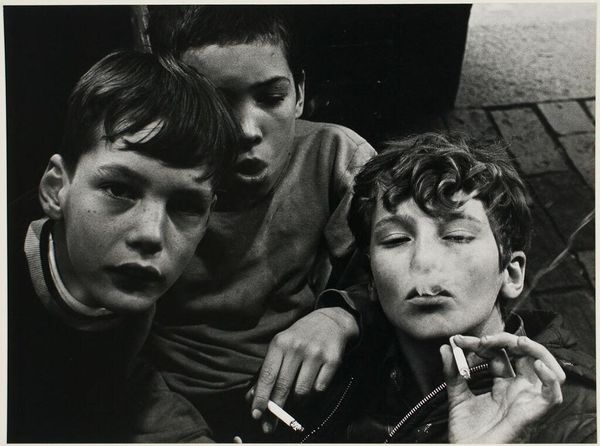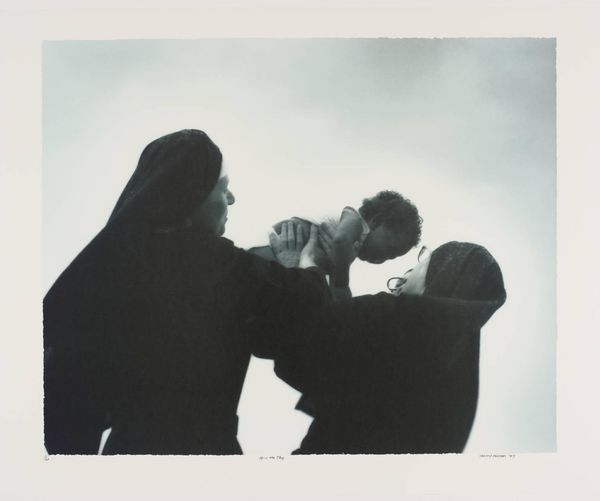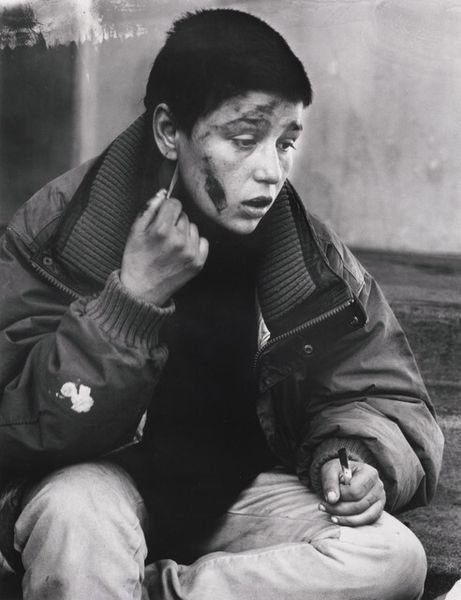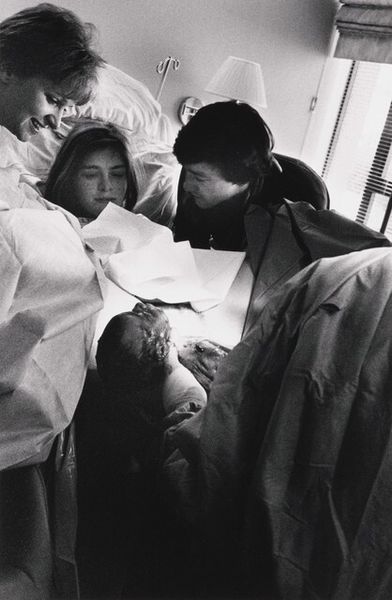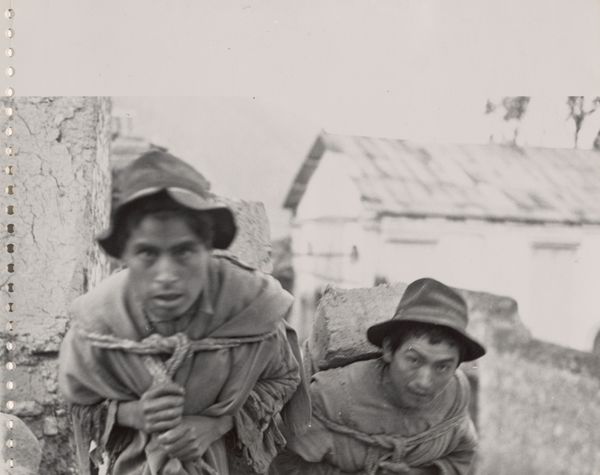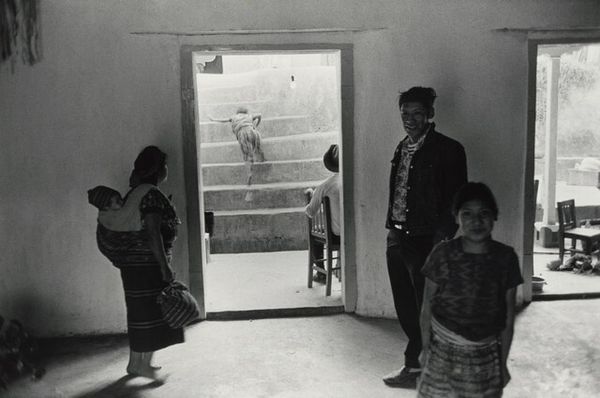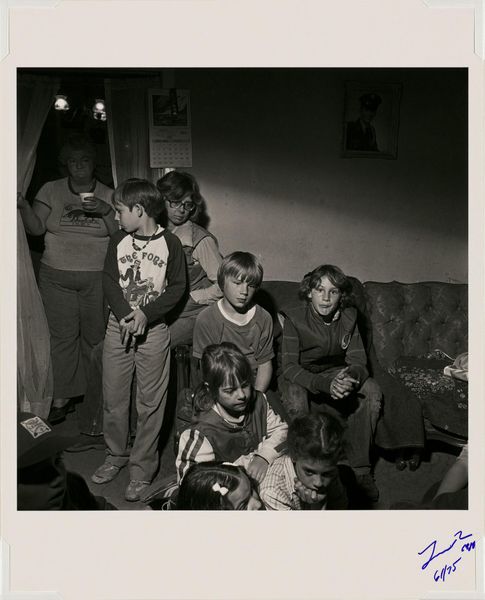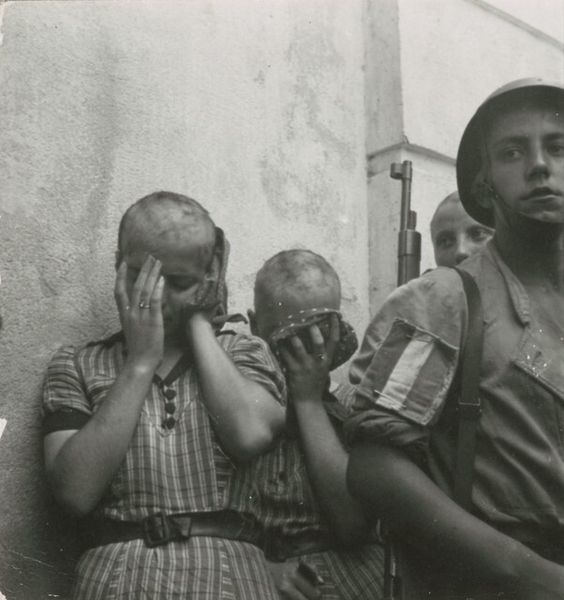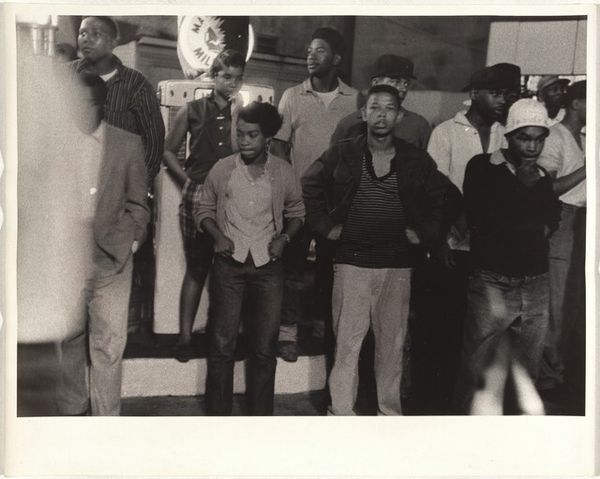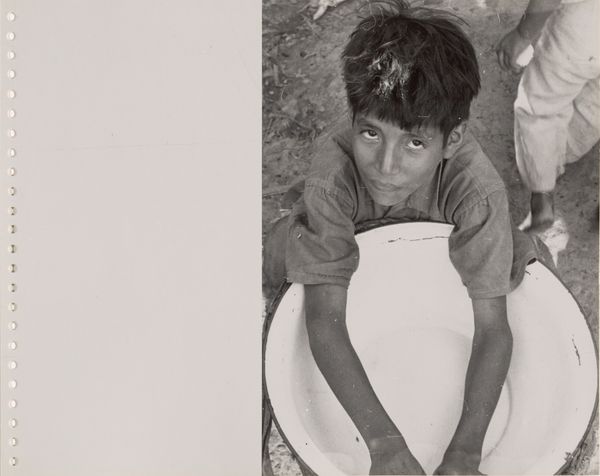
photography
#
portrait
#
landscape
#
street-photography
#
photography
#
historical photography
#
black and white theme
#
black and white
Dimensions: image: 40.64 × 49.53 cm (16 × 19 1/2 in.) sheet: 58.42 × 67.31 cm (23 × 26 1/2 in.)
Copyright: National Gallery of Art: CC0 1.0
Editor: Here we have Leo Rubinfien’s “Buenos Aires, 2005, in the Plaza de Mayo,” a black and white photograph, possibly from sometime between 2005 and 2014. The starkness really grabs me, that sense of being right there with these people in what looks like a candid moment. What draws your attention in this piece? Curator: Well, I think it’s crucial to consider the means of photographic production here. The graininess of the black and white suggests a deliberate choice, a material decision that points us away from slick commercial photography and towards something… grittier, more immediate. Do you think that aesthetic choice impacts how we read the people in the image, the material reality of their lives, and what is going on at Plaza de Mayo? Editor: Definitely. There's a raw quality that feels authentic, but what do you mean when you say 'what's going on' in the Plaza? Is it a commentary on some socioeconomic factors affecting Argentina at that time? Curator: Exactly. Photography isn't just about capturing light, it's about the social relations of image-making, especially street photography. We should be asking ourselves: what social structures and cultural narratives allowed Rubinfien to create this image? How does it function as a document of labour, perhaps of resistance, given the Plaza de Mayo's historical significance? The making of an image is intrinsically linked to the cultural and political background it belongs to. Editor: I hadn’t considered that aspect of photography before. I was mainly focusing on the subject, but this sheds new light on it. It feels less like just a moment captured and more like a conscious statement now. Curator: Precisely. The Plaza de Mayo is saturated with history of protests and resistance movements in Argentina, how would the image be perceived differently in another city, and, if you may, another time? Editor: This has really shifted my perspective. I’ll be paying a lot more attention to how a work's materials and methods reflect the conditions of its making from now on.
Comments
No comments
Be the first to comment and join the conversation on the ultimate creative platform.
